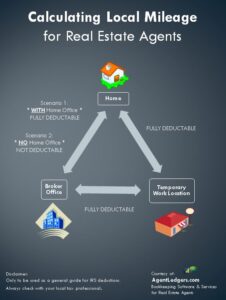January….the first month of a new year, a clean slate, a blank canvas, a fresh start. It’s a time to reflect on the year past and to consider the new year ahead. As a solopreneur, its an opportunity to ask questions such as:
- What is/isn’t working well in my business?
- What am I/are we doing well?
- How can I/we improve?
When you take the time to ask and answer these kinds of questions, you are taking the first step to providing an opportunity for growth. The second and critical step is to set some GOALS.
 Goal Setting: Resolutions vs Goals
Goal Setting: Resolutions vs Goals
It almost goes without saying that setting goals for your business is important. According to Leslie Riopel, who is a professor of psychology at Northwood University, ” you can’t manage what you don’t measure and you can’t improve upon something that you don’t properly manage. Setting goals can help you do all that and more.”
However, there is strategy to setting effective goals. Ineffective goals will overwhelm and frustrate you. On the other hand effective goals will empower and excite. The former happens because often the goals are unrealistic, unspecific, audacious and/or too many. This is a recipe for disappointment, dissatisfaction, and/or burnout.
Furthermore, let’s be clear, a goal is significantly different that a resolution. I am not a strong believer in resolutions/intentions. First, they are usually emotionally based. Second, they are an open ended promise to self. Third, they are not specific enough. Did you know that 25% of people abandon their new years resolution after 1 week? Give it six months and up to 60% have deserted their resolution altogether! Clearly this would be disappointing.
On the other hand effective goals are quite the opposite. They are not casually made up at the stroke of midnight. A goal is a commitment, its specific and action orientated. It has a target in mind. In a blog I posted at this time last year I wrote how an effective goal will be practical/pragmatic, purposeful and planned. As a result of setting these types of goals your business is on its way to thriving.
Yet, this blog is not so much about how to create effective goals. It’s focus is rather on the effectiveness of actually writing them out. Read on to discover why writing goals are a catalyst for greater success.
Setting Goals to Pen and Paper
Clearly it has been established that effective goals are practical, purposeful and planned. But did you know that these goals, when written out are 42% more likely to be achieved. Studies/science have proven this. Nabin Paudyal writes “it turns out that the seemingly simple act of writing unlocks all sorts of psychological and personal dynamics which translate to real tangible results.”
When you keep your goals in your mind, you are engaging in what is called passive goal setting. There is no concrete plan. “Achieving a goal like this is a monumental hurdle. Why? Because what the mind can’t see the mind usually won’t believe.” However, when it becomes visible, they become more real. In essence “you create the conditions that allow for progress to be made.”
Believe it or not, writing with pen and paper works best. However, if this is not your cup of tea, use your computer. Having a written copy, whether typewritten or handwritten, will still be a benefit. Just get the job done!
3 Major Benefits of Written Goals
You may be thinking, “Come on, my goals are not simply going to be achieved just because I wrote them out,” and you would be partially correct. Nothing magical happens. It is not a button you push for instant success. In fact writing out your goals takes time, thought, and energy. However, don’t dispel the exercise too quickly. Investing in this practice will doubtlessly enable you to achieve your goal(s). Here’s why.
I. Written goals bring CLARITY
In the process of writing out your goal(s) you narrow your focus. It becomes clearer what is most important and valuable to you and your business. This is especially true if you utilize the SMART goal setting tool. SMART is an acronym that stands for; Specific, Measurable, Achievable, Relevant and Time-Limited. There are numerous websites that outline this process and give examples of how to write them.
As you complete this exercise you will experience the following.
First, it will enable you to be discriminating, and eliminate those tasks/practices, things, and people that don’t support your goal(s). Without these distractions you will stay on track. In other words, with a map you won’t likely get side-tracked on a detour.
Second, you reduce the chances of confusion. Should a conflict arise in a particular area you will be able to identify what is a priority.
Finally, with laser focused clarity you will more likely increase a concentrated effort. It will be easier to direct your time, energy and resources and concentrate on what matters. In turn, you increase the likelihood of success.
II. Written goals reduce STRESS
Inevitably when your goals are written, and right before you, stress is decreased. This is especially true if you create a goal(s) via the SMART exercise. How so you might ask? Let’s take a look.
- Specificity – As a result the anxiety associated with questions about what you are trying to achieve is eliminated.
- Measurability – Since the goal(s) are measurable you will be able to track your progress and eliminate uncertainty associated with stress.
- Achievability – Having assessed them and how to achieve them you will have a better idea of what to expect. In addition you can prepare for possible challenges ahead of time, and create contingency plans. Thus, you reduce the element of surprise and the stress associated with it.
- Relevancy – You have decided what is beneficial and worth your time. When something intrudes, you reduce stress by having predetermined what is important.
- Time – Having given yourself a timeframe you have a motivator, and a “calming beacon shining…across the horizon.” You can keep track and adjust as necessary.
The SMART exercise allows you to create a blueprint of your goal. In turn this give you greater control eliminating stress along the way.
III. Written goals MOTIVATE
Perhaps the most important outcome of written goals is motivation. First writing goals helps create motivation and then it helps to maintain motivation.
Creating Motivation
When setting goals that will create motivation it is important to do the following:
- Imagine/picture where you and your business would like to be in the future. Have a dream.
- Based upon that vision, set goals that matter to you and fit with that dream.
- Be sure that your goals are measurable and achievable (SMART)
- Write them out (SMART)
By completing the above you have become self accountable. In turn this creates motivation. Your subconscious mind will know what you need to be doing to achieve your goal, which in turn provides subtle motivation.
Maintaining Motivation
Created motivation, the product of written goal(s), is not sufficient enough to achieve your goal(s). That is why I mentioned earlier there is nothing magical about written goals. However, having created clarity, reduced stress and created motivation, you can now ACT. This component is critical. Don’t be one of those solopreneurs who believes that thinking, deliberating, researching, and analyzing equates with action. In fact too much analysis and research can leave you paralyzed.
Once you have created your blueprint you need to get cracking. Each day you will have a clear reminder of your mission. You can refer to your blueprint as often as you need, check and celebrate your progress. Making progress will in turn boost your motivation and confidence. You can also take action steps to make further progress and/or adjust your blueprint (again writing them out). “Writing your plans and spelling them out with a step-by-step breakdown is the next best thing to a life coach cheering you on every day.”
Conclusion
Clearly, there is nothing extraordinary about the month of January. However, it is a natural time for looking back at the past year to evaluate successes and failures. It is also a great time to look ahead and set a goal or three to achieve over the next 11 months. When creating you goal(s) be assured there is strength and energy in writing them out with pen and paper. Why not try it, and then let us know how it goes.
___________________________________________________________________________________________________
Pro Ledger Online offers a cloud-based bookkeeping solution for small business professionals. Click here for a 30-day free trial. – www.pro-ledger.com “Bookkeeping Made Simple”




